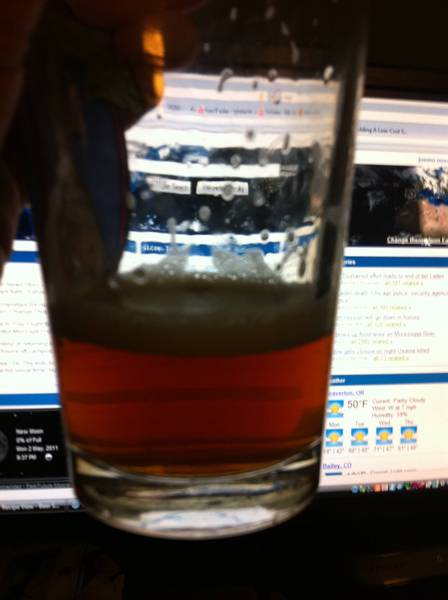joetothemo
Well-Known Member
Fun experiment:
Brewed a half batch of Amber Ale for my Pops visit. 3 Gallons with 2 gallons of wort at end of boil.
I used 1 Gallon ice block to top it back up and cool.
To my surprise, between the 33% ice and the ice bath it was sitting in, I hit 60f from boiling in 8:00 minutes. EIGHT MINUTES.
To say it produced a clear beer is an understatement. This iPhone pic does no justice.
(Sorry, I forgot to take a pic until I was almost finished with the last bottle ...Hic....... BURP)

Brewed a half batch of Amber Ale for my Pops visit. 3 Gallons with 2 gallons of wort at end of boil.
I used 1 Gallon ice block to top it back up and cool.
To my surprise, between the 33% ice and the ice bath it was sitting in, I hit 60f from boiling in 8:00 minutes. EIGHT MINUTES.
To say it produced a clear beer is an understatement. This iPhone pic does no justice.
(Sorry, I forgot to take a pic until I was almost finished with the last bottle ...Hic....... BURP)




